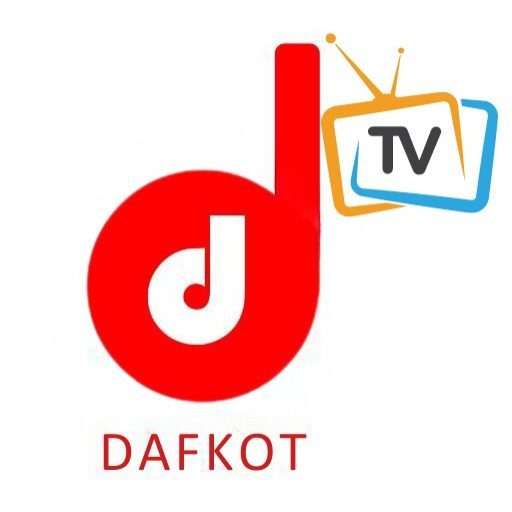Upcoming Event
Data & AI: Accelerating Adoption and Impact
Caurie Putnam//August 27, 2025//
Remote work presents tax opportunities, challenges for business in 2025
Caurie Putnam//August 27, 2025//
More than 1 in 4 paid workdays in the U.S. were done from home last year (up from 1 in 14 days pre-pandemic), according to data from WFH Research. This change in where people work presents both opportunities and new challenges for businesses, including in the accounting realm.
As a tax partner at a regional CPA firm, Anthony R. Scinto, CPA, who chairs the tax department at MMB+CO, has seen firsthand how these challenges play out—and how proactive planning can make all the difference.
“Although the rise of remote and hybrid work has provided a vast number of opportunities for businesses, it also poses increased business compliance and tax challenges that organizations must address,” Scinto said. “From reimbursing remote employees for work-related expenses to navigating multi-state payroll and nexus issues, businesses must now adapt their tax strategies to ensure compliance and avoid costly missteps.”
Scinto says establishing clear expense reimbursement policies, managing the reimbursement process, and maintaining accountability over the system can be challenging for many businesses and pose particular challenges for organizations with a remote or hybrid workforce.
“The most important measure that a company can take is establishing and continuously assessing/revising its business expenses reimbursement policies and procedures,” he said. “Clear and concise policies, which can easily be audited by the organization, are of the foremost importance.”
A common area of confusion is the distinction between a reimbursable business expense and fringe benefits, Scinto said, explaining the IRS distinguishes between reimbursable expenses under an accountable plan and taxable fringe benefits under a nonaccountable plan.
He further explains that under an accountable plan, reimbursements are not taxable to employees if (1) the expense has a business purpose, (2) the employee substantiates the expense (i.e., receipts, logs, invoices, etc.), and (3) any excess reimbursement is returned to the organization within a reasonable time.
“If a reimbursed expense doesn’t meet these requirements, then, in general, it is considered a taxable fringe benefit to the employee, the value of which needs to be included in the employee’s pay,” he said.
An example that he’s seen with remote/hybrid workers can be reimbursements to help employees create a suitable home workspace.
“If the reimbursement is for specific equipment, which is substantiated by the employee, then it should not be taxable to the employee,” Scinto said. “However, if the organization provides the employee with a flat reimbursement/ stipend for home office equipment, the amount reimbursed will generally be considered a taxable fringe benefit, includable on the employee’s annual Form W-2.”
Scinto says it’s also important to keep in mind the income tax nexus of remote employees.
“Income tax nexus refers to the legal connection or threshold that allows a state to impose income tax obligations on a business or individual based on their economic or physical presence in the state,” he said. “Remote work arrangements can inadvertently trigger nexus in states where employees reside or perform work – even part-time.”
Because nexus rules vary by state, and are often quite complex, businesses must closely monitor employee work locations and assess potential tax implications, said Scinto, adding that organizations should ensure that their human resource/ hiring functions are coordinating with their tax and accounting functions to identify new employees, remote assignments, etc. and assess the tax implications to the business and the individual employee.
“Having a clear process and understanding of remote/ hybrid arrangements will also help organizations mitigate risk for their obligations related to employee payroll taxes and other employee-related benefits,” Scinto said. “Similar to state income tax nexus considerations, states have particular rules governing obligations of employers who employ workers located in their jurisdictions.”
Scinto explains that these rules don’t just govern the withholding of state income tax for an employee, but also other employer responsibilities such as state unemployment tax and insurance, local/city/town taxes, and workers’ compensation.
“Employers need to be aware of where remote/hybrid workers are located, when workers are working from more than one state, and what the specific requirements of employers are in such circumstances,” he said. “Additionally, organizations should also consider how certain benefits might change for workers in different states. Health insurance, which is available for employees, often differs dramatically by state, so keeping benefits consistent across a labor force may at times be difficult at best and impossible in certain situations.”
Vincent A. Leo, CPA, partner at Insero Advisors, LLC and Insero & Co. CPAs, LLP, says that at a foundational level, businesses must track where each employee is physically performing their work, down to the state and sometimes local level.
“This ensures that payroll systems are correctly set up to withhold the appropriate state and local income taxes,” he said. “With remote and hybrid workforces now the norm, staying on top of employee locations is no longer optional.”
One of the most common pitfalls in the area of remote work and accounting is a failure by businesses to understand or stay current with local and state tax laws as they apply to remote employees, said Leo, stressing that tax jurisdictions often vary widely, and businesses should not just apply standard protpocols across the board.
“Neglecting to properly track and report remote worker expenses can result in serious financial consequences,” Leo said. “Over time, these errors can compound, creating unnecessary risk for the organization.”
He says businesses should implement clear, standardized onboarding procedures that capture an employee’s work location and tax obligations from day one.
“Equally important is creating a mechanism to monitor if an employee relocates mid-year,” Leo said. “Remote employees also have a role to play. They must communicate location changes promptly and accurately. It’s a shared responsibility between employer and employee.”
The key is to start strong, Leo said, and set your employees up properly from the beginning, and have a system in place to catch any changes along the way.
“As the workforce continues to evolve, proactive compliance is essential,” he said. “The firms that navigate this well tend to have stronger employee trust and fewer surprises come tax season.”
Caurie Putnam is a Rochester-area freelance writer.
Share this!
The global forensic accounting market is set to hit $42.6B by 2033, fueled by fraud risks, AI adoption, digita[…]
August 26, 2025
With the One Big Beautiful Bill, here’s what’s changed, why it matters and how it sets the stage for the mon[…]
August 21, 2025
A Nixon Peabody partner discusses taxation of digital goods, Maryland’s ad tax, New York’s proposals and O[…]
August 21, 2025
The One Big Beautiful Bill raises the SALT cap to $40K through 2029, but experts warn businesses to prepare fo[…]
August 21, 2025
What are pass-through entity taxes, how have they changed, and why is planning in this space important for som[…]
August 20, 2025
The One Big Beautiful Bill Act brings major tax changes for nonprofits, affecting investment income, compensat[…]
August 19, 2025
Sign up for your daily digest of Rochester News.
Remote work presents tax opportunities, challenges for business in 2025
8/27/2025
Monroe County housing inventory hits 5-year high, though it’s hardly high
8/26/2025
Two Rochester-area startups among Grow-NY finalists
8/26/2025
L3Harris’ Rochester operations fuel company’s defense growth
8/26/2025
Transcat CEO announces retirement, board launches successor search
8/26/2025
Josh Allen long ago passed the eye-test for greatness by leaping linebackers in a single bound and rifling touchdown spirals […]
Healthcare providers face rising costs, workforce shortages, and Medicare Advantage complexities while shifting toward value-[…]
Rochester’s summer festivals celebrate culture and diversity, but late-night after-parties bring shootings, violence, and q[…]
The Rochester Broadway Theatre League (RBTL) held its 17th annual Golf Tournament fundraiser on Monday, August 4, netting mor[…]
Preparing for Trump’s new immigration policies – Virtual Panel Discussion
3/31/2025
Trump administration makes big changes in employment and labor law
2/21/2025
AI is here. Be prepared. | Virtual Panel Discussion
12/23/2024
Financial planning literacy for everyone | Virtual Panel Discussion
10/28/2024
The importance of communicating employee benefits with employees – Virtual Panel Discuss[…]
9/30/2024
New cannabis industry facing challenges | Virtual Panel Discussion
8/27/2024
Rochester Business Journal, the leading source of business news and information in Rochester, N.Y., since 1987, and its sister publication, The Daily Record, which covers law and real estate in Western New York, are part of BridgeTower Media, one of the country’s leading business-to-business media companies with more than 40 print and digital publications in more than 25 U.S. markets.
Get our free e-alerts & breaking news notifications!
Subscribe for access to the latest digital and special editions.
Click here for information about plaques, permissions and reprints of previous editions.
© 2025 BridgeTower Media. All rights reserved.
Use of this website is subject to its Terms of Use | Privacy Policy | Your California Privacy Rights/Privacy Policy | Do Not Sell My Info/Cookie Policy




